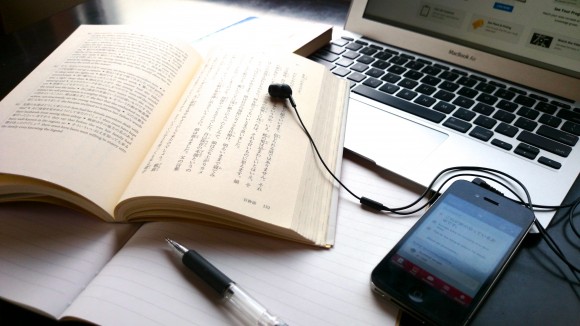
As we’ve said before, Japanese isn’t actually as hard to learn as it’s often made out to be. Unlike English, for example, Japanese follows its own grammatical rules far more rigidly, pronunciation is easy because there is only one variant of each vowel sound to choose from (none of this tomayto/tomahto business), and it’s possible to create entire, perfectly meaningful and valid sentences without uttering a single pronoun or bothering to conjugate a verb.
Nevertheless, the language will not magically seep into you through a desire to speak it alone — you still need to encounter and study it as often as possible. With that in mind, we’d like to present to you the six and a half resources that no dedicated student of the Japanese language should ever be without. Oh, and the good news is some of them are completely free.
1. “Imiwa?”
Your dictionary is the tool you’ll use most often while learning any foreign language, so you need to pick a good one. As much as we love paperbacks and hard copies of books, short of finding a six-inch-thick Japanese/English dictionary that also comes with a team of thumb-sized elves who flick to the right entry on command and then keep a record of it for easy access, paper dictionaries just aren’t going to cut it any more. But why spend hundreds of dollars on a dedicated electronic dictionary when you can get one that lives inside your smartphone, is constantly updating itself to become more useful, and costs absolutely nothing?
Formerly known as Kotoba!, iOS application Imiwa? is arguably one of the best dictionaries out there. Available for iPhone, iPod touch, and iPad, Imiwa? is completely ad-free and, as well as being created and maintained by a genuinely dedicated and experienced team, has won legions of fans across the globe — and for good reason. At time of writing, the app is up to version 4.0 and includes pretty much everything you could ever need from a dictionary, including word lookups, kanji searches (searchable by radical, stroke order or words in which they appear), synthesised speech, verb conjugation, customisable lists, an enormous number of example sentences with words shown in context, and more. It’s also multilingual, supporting English, French, Spanish, German, Italian, Korean, Portuguese, and Russian.
Even if you’re a dedicated Android user or recently made the switch to Google’s OS, there must be an old iPhone lying around your or a friend’s house, so do yourself a favour, grab it and install Imiwa? today. (But if you’re determined not to be seen in public with an iOS device then JED, while not quite as expansive or aesthetically pleasing as Imiwa?, is a solid Japanese/English dictionary app for Android, and also completely free.)
Check it out on iTunes or Facebook now. You won’t regret it.
2. Rikaichan
As far as Japanese learners are concerned, Rikaichan is easily the “best plug-in ever”. With a single click, Firefox users activate a plug-in that allows them to browse Japanese websites with instant, no-fuss access to an extensive Japanese/English dictionary. Just hover your cursor over the word you’re struggling to understand and the plug-in will throw up not just a reading, but its meaning, and in some cases even break multiple-kanji words down for you so you can see what the individual characters mean.
Rikaichan is a reliable, easy-to-use, and completely free tool that makes navigating Japanese content online far less painful, and once you discover it you’ll never want to let it go. Oh, and Chrome users need not despair either – Rikaikun, a solid port of the Rikaichan application, is available for Google’s browser over at the Chrome web store.
3. A decent reference book
Focusing on grammar is a bad way to learn a language (how many three-year-olds do you know who study verb conjugation when picking up their mother tongue?), but there are times when you’ll need to know how to properly conjugate a verb, remind yourself of the usage of a set phrase, or check the meaning of an idiom. At which point, you’ll need something to refer to. Books like (there are plenty of others out there!) Naoko Chino’s Japanese Verbs at a Glance fill that role perfectly.
Not a textbook per-se, Japanese Verbs at a Glance is a reference that is intended to be consulted right the way through one’s studies. Chino’s book covers pretty much every situation you’ll encounter in daily conversation, from asking favours of someone to reporting speech that you’ve heard someone else utter, and prints sentences in their natural kanji/kana combinations (with Romanised readings) for easy understanding. You’ll also find pages of charts with verbs in every possible form, and a comprehensive index at the back of the book for quick look-up. Of course, there are a lot of similar books out there, but having used this one for years, we can safely say that Naoko Chino’s pocket-sized guide has helped us out of a many a jam and, however much we improve, will remain on the shelf for future reference.
4. Read the Kanji
Kanji study is rarely fun, but this website almost makes a game out of it, and is not just effective but surprisingly addictive. After selecting your level (you can opt to study only kanji that appear in each JLPT level, or study hiragana, katakana or even yojijukugo four-kanji phrases popular in Japanese culture), the site presents you with a sentences containing target kanji characters as they might naturally appear in real-world phrases. It’s your job to type in the correct reading for the word, which the site will automatically convert into hiragana. Then, hit the ‘enter’ key and you’ll see either a green circle or a red X flash up for a split second indicating a right or wrong answer, respectively, before the next sentence appears. It’s as simple as that.
Part of the reason Read the Kanji works so well is because of the way the site learns from your mistakes and drills you with kanji and vocabulary that you seem to struggle with. If you correctly identify some low-level character on your first try, for example, it knows that you don’t need to drill it so often, so will only occasionally throw it your way. Make a mistake, however, and it’ll push that kanji forward a little more often.
Things get addictive, though, when you start noticing the colour each character appears at the top of the screen. Each time you correctly identify a word, you’ll notice that it will slowly start to go from dark red through orange and yellow to dark green, with the last colour indicating total proficiency. It’s rare to get that “just one more try” feeling during study, but Read the Kanji manages to evoke it, and it’s surprising how addictive the mere act of making a row of kanji tiles change the same colour can be.
The only possible downside to Read the Kanji is that it isn’t entirely free. Everyone has access to the beginner-level kanji, hiragana and katakana sets, but after that you’ll need to pay US$5 for a month of access to the kanji characters that appear in the remaining JLPT levels. That said, you do get what you pay for, and while some may be reluctant to front the cash, others will see $5 as an absolute bargain. I personally discovered this site back when it was in its beta phase, and since then have watched it grow and grow, and keep going back to it, so I can honestly say that this is one of the best resources I’ve ever encountered for studying kanji. Even if you decide not to take a paid subscription in the end, be sure to head over to Read the Kanji.com and try it at least once.
5. Real (but suitable) Japanese literature
Textbooks are all well and good, but you’ll eventually need to start exposing yourself to real Japanese. And if a trip to Tokyo isn’t on the cards just yet, reading – alongside listening practice, of course – is a great way to do that.
Manga written entirely in Japanese can be a great way to learn the language since, even if a few words stump you, the pictures they accompany will drive the story along and, with context and tone being made immediately clear, you’ll be remembering phrases like fuzakenna! and konoyarou! in no time. But what if you’re just not a manga or anime fan and want to start reading genuine literature? Diving straight into Murakami Haruki’s novels isn’t the best idea (even native Japanese don’t touch that stuff until at least their teens!), but similarly Japanese books meant for small children – although ideal for beginners – rarely stimulate adult minds. So what should you read?
For that, we recommend books like Michael Emmerich’s Read Real Japanese, which reprints a selection of short stories by authors such as Hiromi Kawakami, Banana Yoshimoto, and even horror writer Otsuichi. Rough translations for trickier sections and kanji are printed adjacent to stories themselves, and at the back of the book you’ll find more detailed explanations of how the grammar works.
The most important thing, though, is that you’re not just reading Japanese tailored for non-native speakers, which can be awkward and unnatural. The Hajimete no Bungaku series from publisher Bungeishunju, too, may prove valuable for more advanced learners looking for something a little meatier to get their teeth into. Aimed predominantly at adolescent and young Japanese who rarely read novels and the like, these are collections of stories by famous authors that, while intended for native Japanese speakers, are edited so that overly complex kanji are omitted and tougher sections of the stories are made more approachable. Sadly, the books can be tricky to get hold of outside of Japan, but for anyone who is absolutely determined to read “real” Japanese, these are well worth tracking down.
6. Aural stimulation
While it’s easy to obsess over textbooks and written materials, let’s not forget that the written word came long, long after people started talking to one another. Language was meant to be spoken, and even if you don’t have someone to babble at, it’s important to train your ear as much as possible and try to repeat what you hear. Anime works, of course, but listening to conversations about man-eating giants and space robots is only going to get you so far in life. For a broader sample of spoken Japanese, we recommend listening to Japanese radio online or, if that’s a little too fast for your ear to catch, picking up some audio books or “shadowing” practice texts like the one pictured above (more details on Amazon) that come with audio CDs and don’t focus on reading or writing like most Japanese textbooks do.
Of course, there are also numerous “Learn Japanese” podcasts out there to subscribe to, many of which feature native Japanese speakers (if they don’t, we wouldn’t bother, but that’s just us), and the aforementioned Read Real Japanese should also be considered as it comes with an audio CD of narration – at native-level speed – by professional narrator Reiko Matsunaga. Whatever you find to listen to, the important thing is to keep listening, even if you can’t catch 100% of what’s being said. You’ll be surprised how much seeps in over time.
6.5 Japanese friends/family/coworkers
Okay, so this last (half a) one might frustrate those of you who were hoping to become fluent in Japanese without visiting the country, but when it comes down to it, being surrounded by Japanese speakers, and more importantly having to use Japanese to make yourself understood, is the quickest, easiest (no, really) and most natural way to pick up the language. Of course, if you happen to live somewhere where you can be surrounded by the language and are not able to fall back on your mother tongue, then that will also work, but ultimately you need to hear Japanese being used naturally and respond to it in real-time to make any significant progress. After all, you wouldn’t learn to drive just by reading about it, would you?
Coming to Japan isn’t cheap, but there are myriad ways (homestays, exchange programmes, studying full-time, working holidays, etc, etc) to get here. And even if it’s just for a few months, that’s more than enough time to become fluent to some degree. Don’t believe us? Here’s TED speaker Chris Lonsdale describing how, by not just immersing yourself but making cognitive connections and using language for communication, you can achieve complete fluency in not just Japanese any language in only six months.
Be sure to let us know if there are any other language learning resources that you’re particularly fond of in the comments section below! Websites, applications, textbooks – all are welcome!

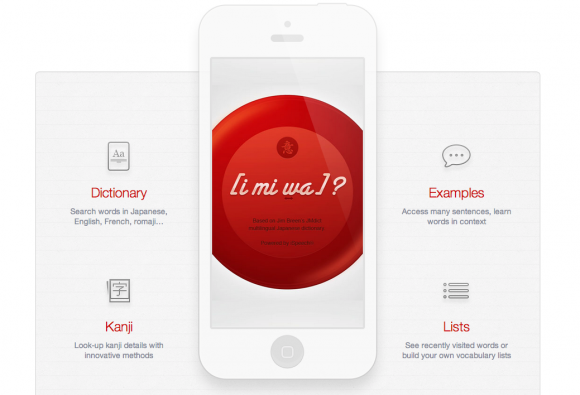
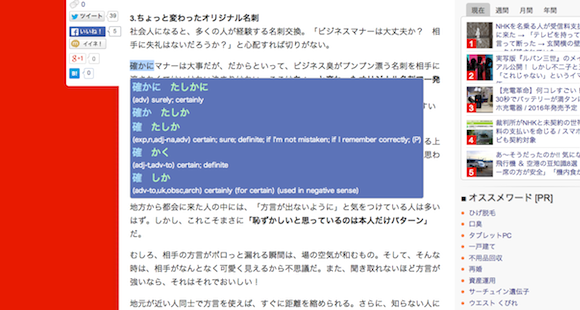
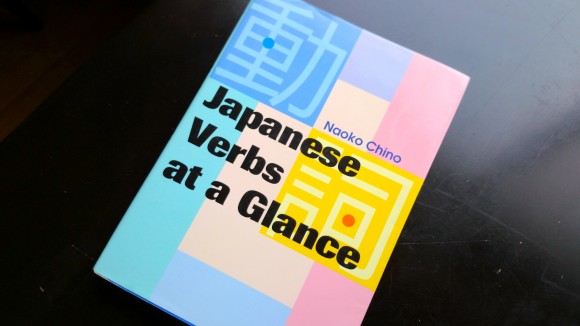
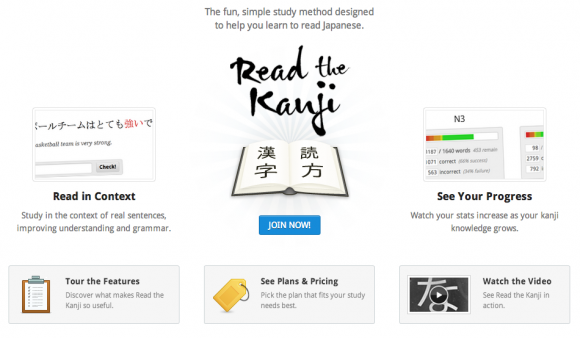
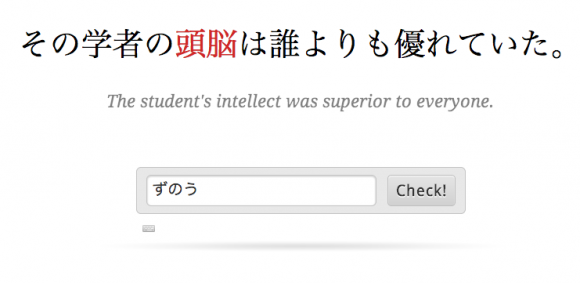
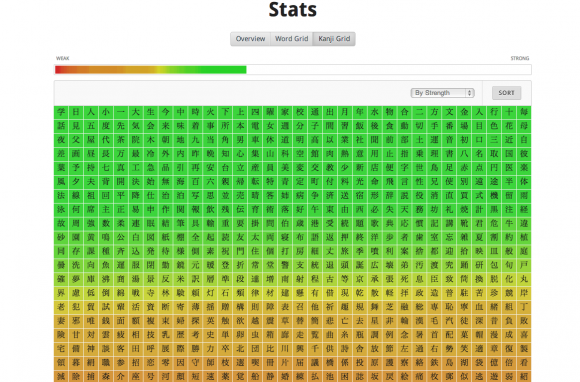
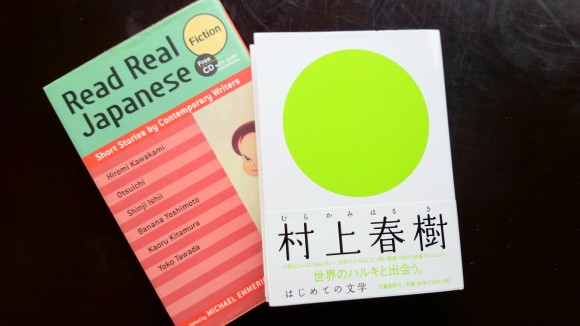
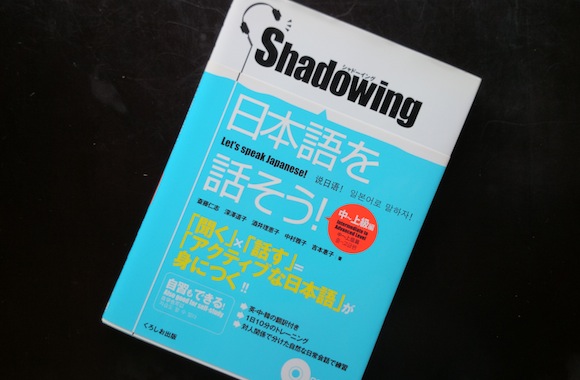
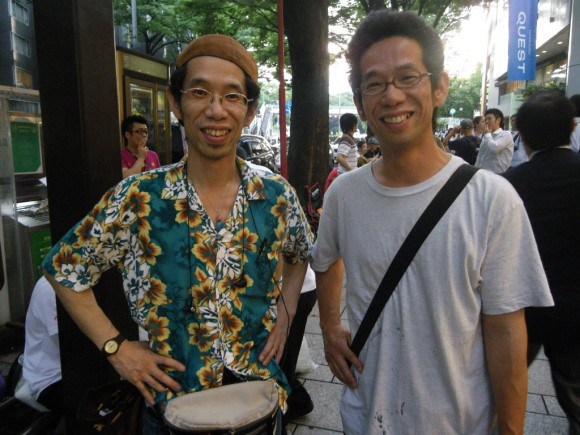
 RocketNews24’s six top tips for learning Japanese
RocketNews24’s six top tips for learning Japanese Put away your textbooks, kids – the key to learning Japanese is Minecraft
Put away your textbooks, kids – the key to learning Japanese is Minecraft Seven mistakes foreigners make when speaking Japanese—and how to fix them
Seven mistakes foreigners make when speaking Japanese—and how to fix them Poop Kanji-Drill toilet paper is the best way to accomplish your Japanese studying doo-ties
Poop Kanji-Drill toilet paper is the best way to accomplish your Japanese studying doo-ties Foreigners misreading Japanese kanji of “two men one woman” is too pure for Japanese Internet
Foreigners misreading Japanese kanji of “two men one woman” is too pure for Japanese Internet Foreigner’s request for help in Tokyo makes us sad for the state of society
Foreigner’s request for help in Tokyo makes us sad for the state of society McDonald’s Japan’s new pancake pie is a taste sensation
McDonald’s Japan’s new pancake pie is a taste sensation Studio Ghibli unveils massive T-shirt collection featuring top anime movie characters
Studio Ghibli unveils massive T-shirt collection featuring top anime movie characters One of Japan’s oldest castles now lets travelers spend night on the grounds, drink in its keep
One of Japan’s oldest castles now lets travelers spend night on the grounds, drink in its keep Bad tourist manners at Mt Fuji Lawson photo spot prompts Japanese town to block view with screens
Bad tourist manners at Mt Fuji Lawson photo spot prompts Japanese town to block view with screens FUK COFFEE?!? Japanese cafe has a perfectly innocent reason for its startling-looking name
FUK COFFEE?!? Japanese cafe has a perfectly innocent reason for its startling-looking name Two things to do, and two things not to do, when leaving a traditional Japanese inn
Two things to do, and two things not to do, when leaving a traditional Japanese inn Who wins in a battle of McDonald’s and Komeda Coffee’s chicken tatsuta burgers?【Taste test】
Who wins in a battle of McDonald’s and Komeda Coffee’s chicken tatsuta burgers?【Taste test】 French Fries Bread in Tokyo’s Shibuya becomes a hit on social media
French Fries Bread in Tokyo’s Shibuya becomes a hit on social media Ghibli Park now selling “Grilled Frogs” from food cart in Valley of Witches
Ghibli Park now selling “Grilled Frogs” from food cart in Valley of Witches Japanese ramen restaurants under pressure from new yen banknotes
Japanese ramen restaurants under pressure from new yen banknotes Red light district sushi restaurant in Tokyo shows us just how wrong we were about it
Red light district sushi restaurant in Tokyo shows us just how wrong we were about it McDonald’s new Happy Meals offer up cute and practical Sanrio lifestyle goods
McDonald’s new Happy Meals offer up cute and practical Sanrio lifestyle goods Tokyo Tsukiji fish market site to be redeveloped with 50,000-seat stadium, hotel, shopping center
Tokyo Tsukiji fish market site to be redeveloped with 50,000-seat stadium, hotel, shopping center Japanese city loses residents’ personal data, which was on paper being transported on a windy day
Japanese city loses residents’ personal data, which was on paper being transported on a windy day Beautiful Red and Blue Star luxury trains set to be Japan’s new Hokkaido travel stars
Beautiful Red and Blue Star luxury trains set to be Japan’s new Hokkaido travel stars New definition of “Japanese whiskey” goes into effect to prevent fakes from fooling overseas buyers
New definition of “Japanese whiskey” goes into effect to prevent fakes from fooling overseas buyers Our Japanese reporter visits Costco in the U.S., finds super American and very Japanese things
Our Japanese reporter visits Costco in the U.S., finds super American and very Japanese things All-you-can-drink Starbucks and amazing views part of Tokyo’s new 170 meter-high sky lounge
All-you-can-drink Starbucks and amazing views part of Tokyo’s new 170 meter-high sky lounge More foreign tourists than ever before in history visited Japan last month
More foreign tourists than ever before in history visited Japan last month New Pokémon cakes let you eat your way through Pikachu and all the Eevee evolutions
New Pokémon cakes let you eat your way through Pikachu and all the Eevee evolutions Disney princesses get official manga makeovers for Manga Princess Cafe opening in Tokyo
Disney princesses get official manga makeovers for Manga Princess Cafe opening in Tokyo We try out “Chan Ramen”, an underground type of ramen popular in the ramen community
We try out “Chan Ramen”, an underground type of ramen popular in the ramen community Sales of Japan’s most convenient train ticket/shopping payment cards suspended indefinitely
Sales of Japan’s most convenient train ticket/shopping payment cards suspended indefinitely Sold-out Studio Ghibli desktop humidifiers are back so Totoro can help you through the dry season
Sold-out Studio Ghibli desktop humidifiers are back so Totoro can help you through the dry season Japanese government to make first change to romanization spelling rules since the 1950s
Japanese government to make first change to romanization spelling rules since the 1950s Ghibli founders Toshio Suzuki and Hayao Miyazaki contribute to Japanese whisky Totoro label design
Ghibli founders Toshio Suzuki and Hayao Miyazaki contribute to Japanese whisky Totoro label design Doraemon found buried at sea as scene from 1993 anime becomes real life【Photos】
Doraemon found buried at sea as scene from 1993 anime becomes real life【Photos】 Tokyo’s most famous Starbucks is closed
Tokyo’s most famous Starbucks is closed One Piece characters’ nationalities revealed, but fans have mixed opinions
One Piece characters’ nationalities revealed, but fans have mixed opinions We asked a Uniqlo employee what four things we should buy and their suggestions didn’t disappoint
We asked a Uniqlo employee what four things we should buy and their suggestions didn’t disappoint Kanji fail — Japanese parents shocked to learn their baby girl’s name has inappropriate meaning
Kanji fail — Japanese parents shocked to learn their baby girl’s name has inappropriate meaning English conversation school in Japan has clever reminder that students don’t have to be perfect
English conversation school in Japan has clever reminder that students don’t have to be perfect What’s funnier and more likely to make you study than poo? How about male pattern baldness?
What’s funnier and more likely to make you study than poo? How about male pattern baldness? The hidden meaning of the U.S. Air Force’s “shake and fries” patch in Japan
The hidden meaning of the U.S. Air Force’s “shake and fries” patch in Japan Darth Vader to Japanese dictionary released, selling like Tusken bread
Darth Vader to Japanese dictionary released, selling like Tusken bread “We wasted so much time in English class” — Japanese Twitter user points out major teaching flaw
“We wasted so much time in English class” — Japanese Twitter user points out major teaching flaw What’s wrong with English education in Japan? Pull up a chair…
What’s wrong with English education in Japan? Pull up a chair… Our Japanese writer introduces some handy phrases so you too can speak the Kansai dialect!
Our Japanese writer introduces some handy phrases so you too can speak the Kansai dialect! North Japan prefecture creates guide to help new foreign workers understand local language quirks
North Japan prefecture creates guide to help new foreign workers understand local language quirks Dark Horizon textbooks go beyond “Hello my name is…” to “Who are you calling a bitch, bitch!”
Dark Horizon textbooks go beyond “Hello my name is…” to “Who are you calling a bitch, bitch!” “Recycling in Japan” or “Reasons to get it right and avoid eternal shame”
“Recycling in Japan” or “Reasons to get it right and avoid eternal shame” Buddhist temples in Japan get digital upgrade with new techno wooden fish【Video】
Buddhist temples in Japan get digital upgrade with new techno wooden fish【Video】 Japanese students despair over the many, MANY ways you can describe a dead flower
Japanese students despair over the many, MANY ways you can describe a dead flower Nine reasons why Japanese men hesitate to say “I love you”
Nine reasons why Japanese men hesitate to say “I love you” W.T.F. Japan: Top 5 most difficult kanji ever【Weird Top Five】
W.T.F. Japan: Top 5 most difficult kanji ever【Weird Top Five】 Japan’s Kanji of the Year revealed, reflects both the good and the bad of 2022
Japan’s Kanji of the Year revealed, reflects both the good and the bad of 2022
Leave a Reply